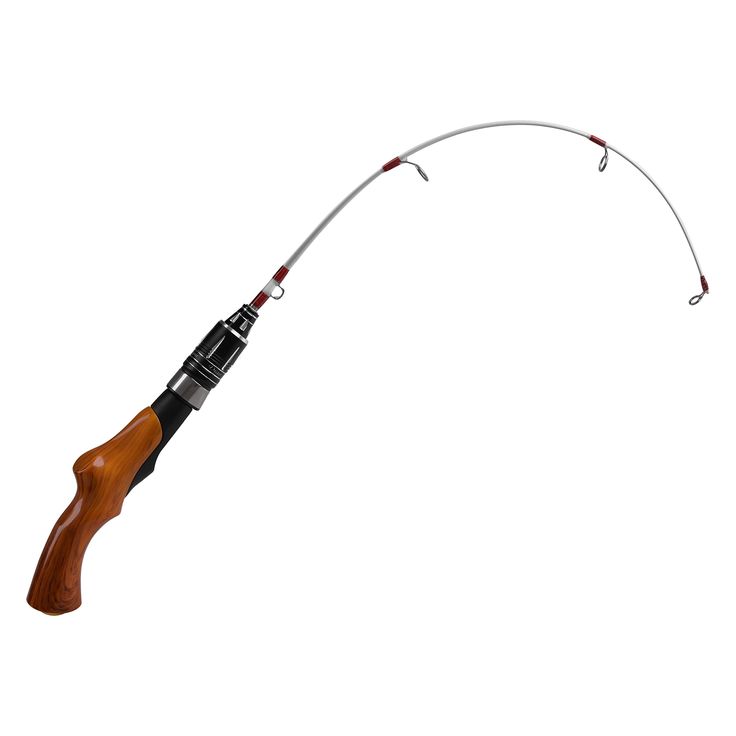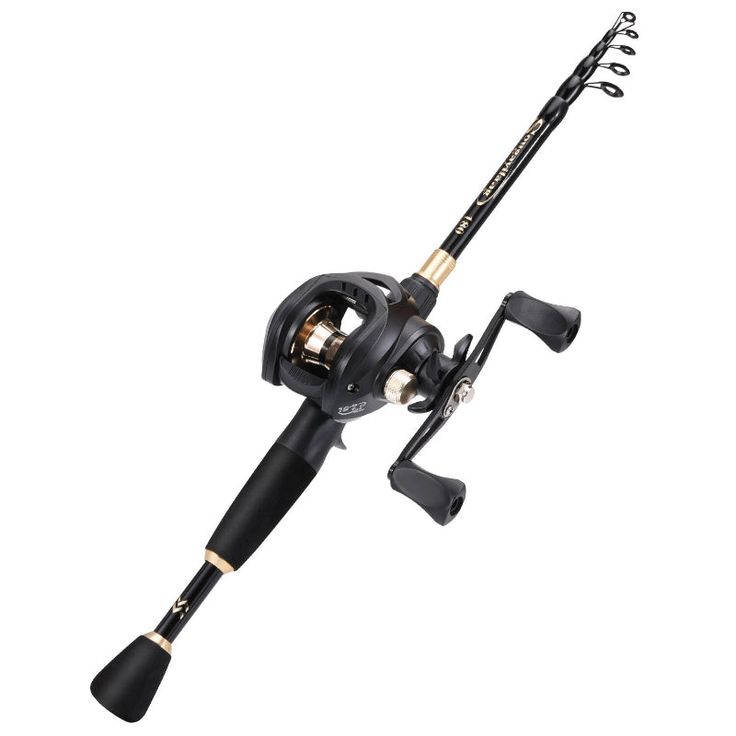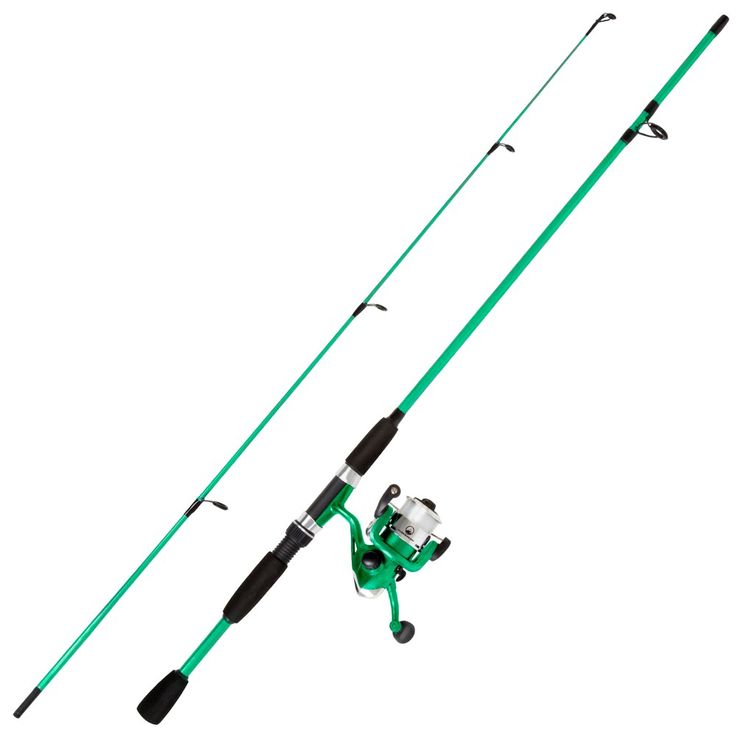Introductory Considerations Before Loading Your Line
Before diving into how to put line on a fishing rod, there are some key considerations to address. Taking the time to select the right equipment will make the process smoother and ensure a successful day of fishing.

Choosing the Right Fishing Rod
Your fishing experience begins with the rod. Select a rod suited to the type of fishing you plan to do. Rods vary in length, weight, and flexibility. A longer rod casts further, while a shorter one offers more precision. Lightweight rods are ideal for smaller fish, whereas heavier rods are better for larger catches.
Identifying the Ideal Fishing Line for Your Needs
Next comes selecting the line. The choice of fishing line impacts your casting, catching, and reeling in fish. Monofilament lines stretch and are good for beginners. They forgive sudden tugs. Braided lines have no stretch and offer sensitivity to bites. They work well for long-distance casting. Fluorocarbon lines are nearly invisible underwater and are great for stealthy fishing. Consider the fish species, water conditions, and your own skill level when choosing your line.
Types of Fishing Lines
Selecting the right type of fishing line is crucial for anglers. Each type has its unique set of characteristics designed for different situations and species of fish. Here we’ll discuss the three main types of lines: monofilament, braided, and fluorocarbon.
Monofilament Lines
Monofilament lines, often referred to as mono, are the most popular choice among beginners. They are versatile, easy to handle, and come in a variety of strengths and colors. The main advantage of mono is its stretchiness, which acts like a shock absorber during a fish strike. This forgiveness is helpful when battling fish, reducing the likelihood of the line snapping.
Braided Lines
Braided lines, known for their lack of stretch, offer excellent sensitivity. You can feel even the slightest nibbles on your bait. They’re strong and thin, enabling longer casts and better cutting through water currents. However, they are more visible underwater and can be difficult to tie knots with due to their slippery surface.
Fluorocarbon Lines
Fluorocarbon lines boast near invisibility underwater, making them the stealth option for skittish fish. They also have less stretch than monofilament but more than braided lines. This balance offers sensitivity while providing some give during fish strikes. Fluorocarbon lines are also resistant to abrasions and can withstand harsh fishing conditions.
Essential Tools for Loading Fishing Line
To load your fishing rod line effectively and efficiently, some essential tools can make a significant difference. One of the most important gadgets you’ll need is a line spooler. This tool helps maintain an even tension on the line and prevents it from tangling as you wind it onto the reel. Here’s a closer look at the line spooler and other helpful gadgets.
Line Spooler and Other Helpful Gadgets
Line Spooler: The line spooler is a must-have for any angler. It keeps the line tight and in place as you reel it in, ensuring a smooth transfer onto your fishing rod. It also allows you to adjust the tension as needed, which is crucial for loading different types of lines.
Fishing Pliers: A good pair of fishing pliers can serve multiple purposes. They can be used to cut the line cleanly, which is essential when you’re attaching the line to the reel or changing the line out. They should have a sharp cutting edge and a comfortable grip.
Scissors or Line Cutters: In addition to or as an alternative to pliers, having scissors designed for cutting fishing line is beneficial. They make clean cuts and come in handy when you need precision.
Rod Holder: A rod holder secures your rod in place while you focus on loading the line. This tool prevents the rod from moving and makes the process more manageable, particularly when you’re working alone.
Equip yourself with these tools to set up your fishing line with ease and prevent potential problems before hitting the water.

Step-by-Step Guide to Threading the Line
Threading your fishing line correctly is crucial for a successful fishing trip. Let’s walk through the steps of attaching and winding the line on your fishing rod reel for optimum performance.
Attaching the Line to the Reel
To start, open the bail of the reel. This allows the line to be freely threaded. Next, thread the end of your fishing line through the guide closest to the reel. Then wrap the line around the reel spool. It’s essential to tie a secure knot here. A simple and effective knot for this purpose is the arbor knot. Once tied, pull on the line to tighten the knot and trim any excess line with a cutter.
Winding the Line Properly
After attaching the line to the reel, close the bail. Hold the line with slight tension between your fingers, which helps in even distribution on the spool. Slowly start to turn the handle of the reel. Monitor the line’s tension regularly. Uneven lines or loops indicate a need for more tension. Continue winding until you have enough line on the reel, typically within 1/8 inch of the reel’s rim. This helps in achieving long, smooth casts and prevents tangling.
Tips to Prevent Line Tangling
A common frustration for anglers is line tangling. To have a stress-free fishing experience, follow these tips to prevent your fishing line from tangling.
Techniques to Ensure Smooth Casting
- Check your spool: Before casting, ensure that your spool is not overfilled. Keeping the line within 1/8 inch of the spool’s rim is ideal.
- Use proper line: Match the line type with your reel’s recommendation. Using the suitable line type minimizes the chance of creating loops that lead to tangles.
- Monitor line twisting: After catching a fish or retrieving your line, check for twists. If you notice any, let out the line while moving the boat forward and then reel it back in.
- Apply line conditioner: Line conditioners can reduce memory in the line, preventing it from coiling and tangling. These products are especially useful for lines that have been stored for a long time.
- Maintain tension: Keep the line tension consistent when casting. This control allows the line to lay smoothly on the spool as you reel in.
- Practice the right casting technique: Refine your casting motion to be smooth and controlled. Jerky or rapid casting often leads to tangles.
- Store lines properly: When not using your rod, store it in a way that prevents the line from becoming loose or knotted. Hanging the rod up or using a line keeper can help.
By implementing these techniques, you can ensure smooth casting and enhance your overall fishing experience. Remember, preventing line tangling starts with the right preparation before you even hit the water.

Regular Maintenance of Fishing Line and Rod
Proper maintenance is essential for the longevity of your fishing gear. Here are some best practices to keep in mind for line care and knowing when it’s time to replace your fishing line.
Best Practices for Line Care
To preserve the performance of your fishing line, follow these maintenance tips:
- Clean your line: After each use, gently wipe your line with a cloth to remove grit, salt or dirt.
- Avoid direct sunlight: UV rays can weaken fishing line, so store it away from sunlight.
- Maintain line moisture: Do not let your line dry out completely as it may become brittle. Use a line conditioner if necessary.
- Check for wear and tear: Regularly inspect your line for nicks, frays, or weak spots.
- Store correctly: Keep your line on a reel or in a cool, dark place to prevent deterioration.
When to Replace Your Fishing Line
It’s crucial to know when to replace your fishing line to avoid unexpected breakages:
- Visible damage: If you see any signs of fraying, cuts, or abnormal stretch, it is time to replace your line.
- Loss of strength: Test your line’s strength periodically; replace it if it snaps easily.
- Memory effect: If your line remains coiled when unwound from the spool, it may have ‘memory’ and need replacing.
- After a big catch: If you’ve hauled in a particularly tough fish, it’s good practice to replace the line.
- Regular interval: Even if not visibly worn, replace your line at least once a season to ensure optimal performance.
Regular maintenance alongside timely replacements will keep your fishing line and rod in the best condition, ensuring you’re always ready for a great catch.
Future Trends in Fishing Line Technology
As the fishing industry evolves, so does the technology behind fishing gear, particularly fishing lines. Looking ahead to 2024, several exciting innovations are poised to transform how anglers equip themselves for a day on the water. With advancements in materials science and manufacturing techniques, future fishing lines are expected to offer enhanced performance characteristics that meet the needs of both novice and experienced anglers.
Innovations to Look Forward to in Fishing Gear
- Enhanced Durability: Upcoming fishing lines will utilize new synthetic materials. These materials promise increased strength and resistance against abrasion, making them more durable in rough conditions.
- Improved Sensitivity: Technological enhancements are set to increase the sensitivity of fishing lines. This will allow anglers to feel even the slightest nibbles, improving their reaction time and success rate.
- Eco-friendly Options: The trend towards sustainability is influencing the fishing industry as well. Expect to see biodegradable and eco-friendly fishing lines that perform well while reducing environmental impact.
- Smart Technology Integration: Future lines may incorporate smart technologies, such as real-time tension sensors. These sensors can alert anglers to changes in line tension, helping to prevent breakages and loss of bait or catch.
- Color Adaptation: Innovations might include lines that can change color based on water conditions or depth, improving invisibility and reducing line spooking fish.
These advancements in fishing line technology not only promise to enhance the fishing experience but also aim to address environmental concerns and usability issues. As technology progresses, these innovations could become standard, helping anglers achieve better results with less effort and more sustainability.